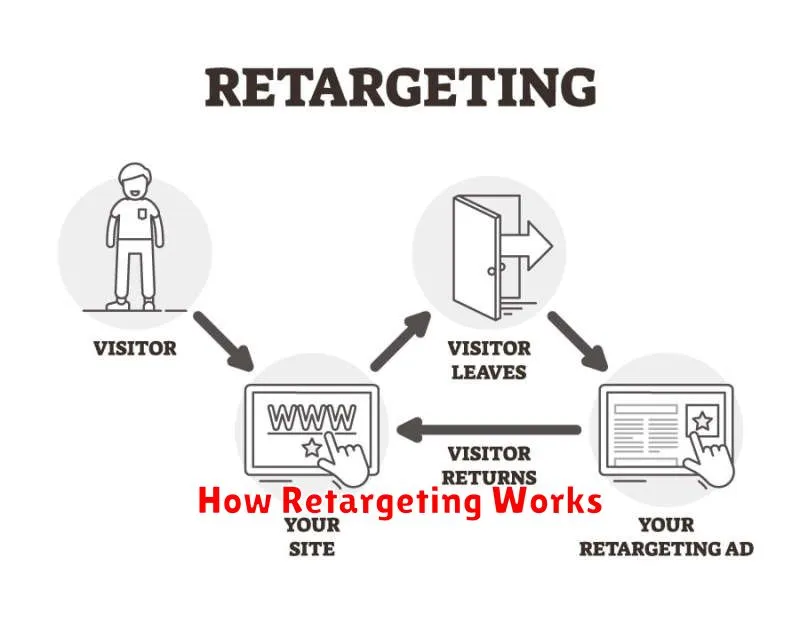Have you ever browsed a product online, only to see ads for it following you across the web? This isn’t magic, it’s retargeting. Retargeting ads, also known as remarketing ads, are a powerful digital marketing strategy that allows you to reconnect with potential customers who have previously interacted with your website, app, or other digital platforms. By strategically displaying targeted advertisements to these individuals, you can re-engage their interest and guide them back towards completing a purchase or taking a desired action. Understanding the basics of retargeting ads is crucial for any business looking to maximize their online advertising ROI and improve conversion rates.
This article will delve into the fundamentals of retargeting ads, providing a comprehensive overview of how they work, their benefits, and the various types of retargeting campaigns you can implement. We’ll explore the key components of successful retargeting, from setting up tracking pixels and building targeted audience segments to crafting compelling ad creatives and optimizing campaign performance. Whether you’re a seasoned marketer or new to digital advertising, this guide will equip you with the knowledge you need to harness the power of retargeting ads and drive significant results for your business.
What Is Retargeting?
Retargeting, also known as remarketing, is a form of online advertising that can help you keep your brand in front of bounced traffic after they leave your website. It allows you to strategically target users who have previously interacted with your website, advertisements, or social media channels.
Essentially, retargeting works by placing a cookie in the user’s browser. This cookie allows your retargeting platform to identify users as they browse other websites. When these users visit a website within the ad network, your ad can be displayed, reminding them of your products or services.
The goal of retargeting is to re-engage users who have shown interest in your offerings, thereby increasing brand recall and ultimately driving conversions.
How Retargeting Works

Retargeting, also known as remarketing, relies on tracking user behavior across the web. When a user visits your website, a small piece of code (a pixel or cookie) is placed in their browser. This cookie allows advertising platforms to identify the user as they navigate other sites.
When the user later visits a website within the ad network, the platform recognizes the cookie and displays your targeted ads. These ads serve as a reminder of the products or services they previously viewed, encouraging them to return and complete a purchase or take another desired action.
The process can be summarized in these key steps:
- User visits your website: A cookie is placed in their browser.
- User leaves your website: They browse other sites within the ad network.
- Retargeting platform identifies the user: Based on the cookie.
- Targeted ads are displayed: Reminding the user of your offerings.
Setting Up Pixels and Tags
Pixels and tags are foundational elements for retargeting. They are snippets of code that you place on your website. These tools allow you to track user behavior and collect valuable data about your site visitors.
A pixel is primarily associated with platforms like Facebook and acts as a tracker for specific actions like viewing a product or adding an item to a cart.
Tags, commonly associated with platforms like Google, serve a broader purpose. They collect data on website traffic, conversions, and other user interactions. Different tag types exist, each catering to specific data collection needs.
Proper installation of pixels and tags is crucial for effective retargeting. Incorrect setup can lead to inaccurate data collection, hindering the performance of your campaigns. Follow the specific instructions provided by each advertising platform for correct implementation.
Ad Platforms That Support Retargeting
Several prominent ad platforms offer robust retargeting capabilities, allowing businesses to re-engage their website visitors. Choosing the right platform depends on your specific needs and budget.
Major Platforms
Google Ads is a popular choice, offering sophisticated retargeting options through its extensive network. Features like custom audience creation and detailed targeting parameters provide granular control over your campaigns.
Facebook Ads also offers powerful retargeting solutions. Leveraging its vast user data, Facebook allows for precise targeting based on demographics, interests, and behaviors observed on its platform and affiliated sites. This makes it highly effective for re-engaging users who have interacted with your brand on Facebook or Instagram.
Other notable platforms include LinkedIn Ads, particularly valuable for B2B retargeting, and Twitter Ads, allowing you to reconnect with users who have engaged with your tweets or visited your profile.
Choosing a Platform
Consider factors like your target audience, budget, and campaign objectives when selecting a retargeting platform. Certain platforms are better suited for specific industries and demographics.
Best Practices for Ad Creatives

Creating effective retargeting ad creatives requires a strategic approach. Focus on grabbing attention and re-engaging users who have previously interacted with your brand. Relevance is key. Tailor your message to the specific audience segment and the actions they took on your website or app.
High-quality visuals are crucial. Use compelling imagery or video that aligns with your brand and resonates with the target audience. Keep your messaging concise and clear, highlighting the unique value proposition of your products or services. A strong call to action is essential, encouraging users to complete the desired action, whether it’s making a purchase, signing up for a newsletter, or downloading a resource.
Testing and optimization are vital for maximizing ad performance. Experiment with different ad formats, visuals, and messaging to identify what resonates best with your audience. Regularly analyze your ad performance metrics and make adjustments as needed to improve click-through rates and conversion rates.
Measuring Campaign Performance
Tracking the success of your retargeting campaigns is crucial for optimization and achieving your desired results. Key performance indicators (KPIs) provide quantifiable metrics to assess campaign effectiveness.
Common KPIs for retargeting campaigns include:
- Click-Through Rate (CTR): Measures the percentage of users who click on your retargeted ads.
- Conversion Rate: Tracks the percentage of users who complete a desired action, such as making a purchase or filling out a form, after clicking on a retargeted ad.
- Return on Ad Spend (ROAS): Calculates the revenue generated for every dollar spent on your retargeting campaign.
- Cost Per Acquisition (CPA): Represents the cost associated with acquiring a new customer through your retargeting efforts.
By monitoring these KPIs, you can identify areas for improvement, adjust your targeting strategies, and optimize your ad creatives to maximize the impact of your retargeting campaigns.

